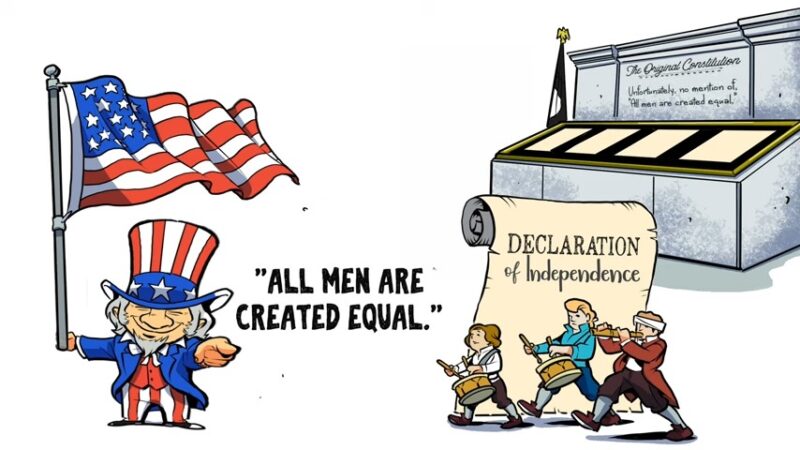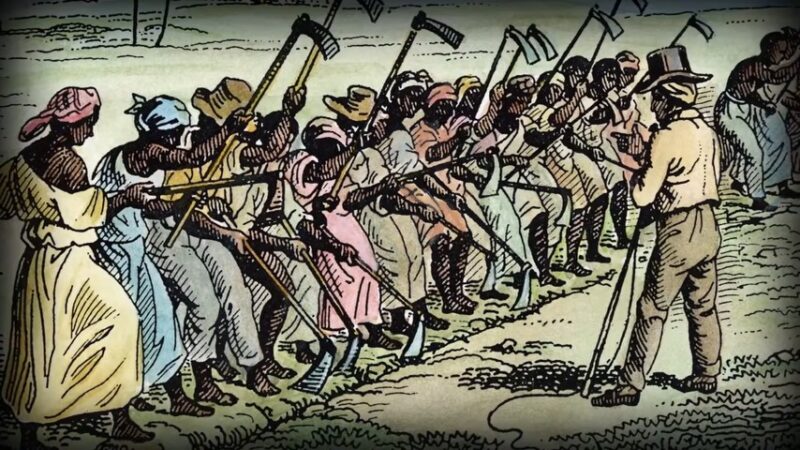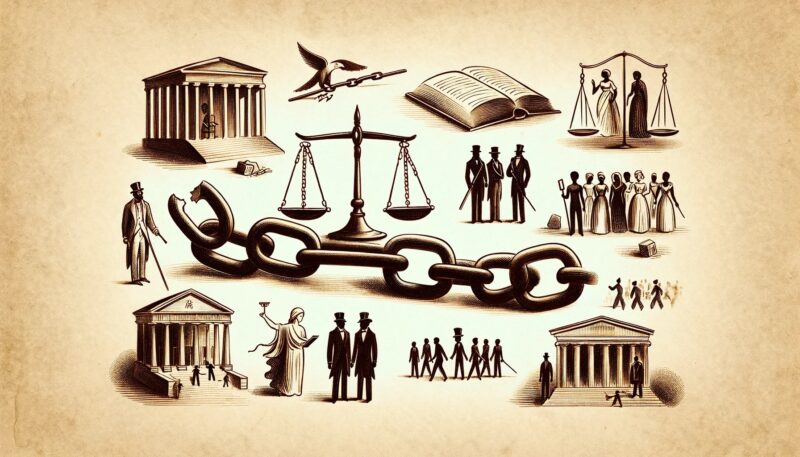The United States Constitution, a revered document in American history, was drafted with the primary goal of establishing a just and effective government. The Preamble explicitly lists “establishing Justice” as a foundational objective, reflecting the Founding Fathers’ commitment to creating a fair and equitable system.
Centuries later, many voices questioned whether the Constitution established a just government or not. While this is not an easy thing to determine, since it includes a countless string of factors, coming to some conclusions is certainly possible.
From our perspective, the Constitution did exactly that, because of:
- It was drafted with the primary goal of establishing a just and effective government
- Its ability to be amended has been crucial in its evolution towards a more just government.
- It established a system for electing government officials, with the Electoral College for presidential elections, and appointed Supreme Court Justices.
Today, we will talk about these points, and more than that, in greater detail.
Amendments and Evolving Justice

The Constitution’s capacity for amendment has been crucial in its evolution towards a more just government. The initial document, while groundbreaking, had significant shortcomings, particularly regarding slavery and the rights of minorities.
Over time, amendments have played a vital role in rectifying these injustices and expanding the scope of rights and protections.
Key amendments that significantly altered the Constitution’s approach to justice include:
- The 13th Amendment, which abolished slavery;
- The 14th Amendment grants citizenship rights to all persons born or naturalized in the United States, including former slaves;
- The 15th Amendment ensures voting rights regardless of race, color, or previous condition of servitude;
- The 19th Amendment granted women the right to vote;
- The 24th Amendment, abolishing the poll tax;
- The 26th Amendment lowered the voting age to 18.
These amendments reflect the Constitution’s ability to adapt and respond to the evolving needs and values of American society. They signify a move towards a more inclusive and equitable system, addressing some of the critical issues that the original document had overlooked or inadequately addressed.
Democratic Foundations of the Constitution
The Constitution’s democratic ethos is evident in its structure and provisions. The 1787 Constitution introduced a system where each state would have two senators, ensuring a balance of power and preventing any single individual or state from dominating.
This bicameral legislature, comprising the Senate and the House of Representatives, was a significant step towards a more democratic system, as it combined both equal and proportional representation.
But the key aspects of the democratic foundations are:
- Bicameral Legislature:
- The Senate and the House of Representatives form the two chambers of Congress.
- Each state is represented equally in the Senate, while representation in the House is based on population.
- This structure balances the interests of states with large and small populations.
- Election of Government Officials:
- The Constitution outlines a system for electing officials, including the President, Senators, and Representatives.
- The Electoral College system is used for presidential elections, representing an indirect form of voting by the people.
- Supreme Court Justices are appointed, not elected, serving as an exception to this electoral framework.
- Separation of Powers:
- The Constitution divides government power among the executive, legislative, and judicial branches.
- This separation is designed to prevent the concentration of power and ensure checks and balances.
- Each branch has distinct and independent powers and areas of responsibility.
- Flaws in the Democratic Foundation:
- Initially, the Constitution did not grant universal voting rights.
- Women and enslaved individuals, among others, were excluded from voting and political participation.
- This exclusion challenges the extent to which the Constitution originally reflected true democratic principles.
The Constitution and Slavery

The Constitution and its relationship with slavery is a pivotal aspect of its historical legacy, particularly in the context of establishing justice. While the Constitution laid down principles of equality and rights, it paradoxically maintained the institution of slavery, creating a profound contradiction within its text.
- Indirect Support for Slavery:
- The original Constitution did not explicitly mention slavery but included provisions that supported it.
- The Three-Fifths Compromise counted enslaved Africans as three-fifths of a person for congressional representation and taxation, benefiting slaveholding states.
- A clause allowed the continuation of the transatlantic slave trade until 1808, reflecting a compromise between pro-slavery and anti-slavery factions.
- Congressional Powers and Slavery:
- The “necessary and proper” clause granted Congress broad legislative powers.
- However, this clause did not address the moral and ethical implications of slavery.
- This oversight represented a significant moral blind spot in a document purporting to establish a just government.
- Complex Views of the Founding Fathers:
- The inclusion of slavery in the Constitution highlighted the conflicting views among the Founding Fathers.
- There was a tension between the ideals of liberty and equality and the economic and social realities of slavery.
- This conflict was reflective of the broader societal divisions of the time.
- Evolution of the Constitution’s Stance on Slavery:
- Over time, societal attitudes towards slavery began to shift.
- Changing religious morals, the growth of abolitionist movements, and the influence of leaders like John Adams and Abraham Lincoln played a crucial role.
- These changes in perspective paved the way for significant constitutional amendments.
- The Emancipation Proclamation and Amendments:
- Abraham Lincoln’s Emancipation Proclamation in 1863 was a landmark step towards ending slavery.
- Subsequent amendments, particularly the 13th Amendment, formally abolished slavery.
- These changes marked a significant evolution in the Constitution from its original stance, aligning it more closely with the principles of justice and equality.
- The start of an organized women’s rights movement in the U.S. at the Seneca Falls Convention.
Critique of the Constitution’s Justice
Despite its progressive amendments, the Constitution has faced criticism for its approach to justice. Among many critiques, the commonest ones are:
| Aspect of Critique | Details and Implications |
|---|---|
| One-Sided Framing | – The Constitution primarily reflected the interests of white, property-owning men. – It initially tolerated slavery, excluding a significant portion of the population from rights and freedoms. – Women and non-property owners were not represented, questioning the inclusivity of its justice. |
| Initial Tolerance of Slavery | – The Constitution’s original clauses indirectly supported the institution of slavery. – This stance contradicted the principles of liberty and equality it aimed to uphold. |
| Lack of Universal Representation | – Exclusion of women and non-property owners from voting and political participation. – This limitation challenges the democratic foundations of the Constitution. |
| Supreme Court Structure | – Life-tenured, unelected judges of the Supreme Court have raised concerns about democratic representation. – The Court’s composition and appointment process have been seen as contrary to democratic ideals. |
| Congressional Powers | – The “necessary and proper” clause grants Congress broad legislative powers. – Critics argue this could lead to governmental overreach and power concentration. |
| Potential for Power Imbalances | – Despite checks and balances, there’s a risk of power abuse in different government branches. – The balance of power can be threatened by the expansive powers of certain branches or officials. |
| Ongoing Debate on Justice | – The Constitution’s evolution and amendments have addressed some issues but not eradicated all concerns. – Debates continue on its effectiveness in establishing a truly just and equitable government. |
FAQs
What kind of government did the US establish?
The United States established a federal republic form of government, characterized by a division of powers between the national government and the states, with a system of checks and balances among three separate branches: executive, legislative, and judicial.
When did America establish a government?
America established its first government under the Articles of Confederation in 1781. The current form of government, based on the United States Constitution, was established on March 4, 1789, when the Constitution went into effect.
Who refused the Constitution?
Several prominent figures, known as Anti-Federalists, refused to support the Constitution initially. They included leaders like Patrick Henry, George Mason, and Elbridge Gerry, who were concerned about the lack of a Bill of Rights and the potential for federal government overreach.
Who didn’t write the Constitution?
While many Founding Fathers contributed to the Constitution, notable figures like Thomas Jefferson and John Adams did not directly write it. Jefferson was serving as the U.S. minister to France, and Adams was the U.S. minister to Great Britain during the Constitutional Convention.
The Bottom Line
The United States Constitution, a living document, has played a pivotal role in shaping American governance and society. Its aim to establish a just government is evident in its democratic foundations, the inclusion of checks and balances, and its capacity for amendment to address societal changes.
The Constitution’s legacy is complex, marked by its initial support for slavery and ongoing debates over its interpretation and application. The Constitution’s evolution, particularly through amendments, demonstrates a commitment to rectifying past injustices and expanding rights and protections.
Yet, the critiques of its approach to justice and the potential for power imbalances underscore the need for continual assessment and adaptation.
